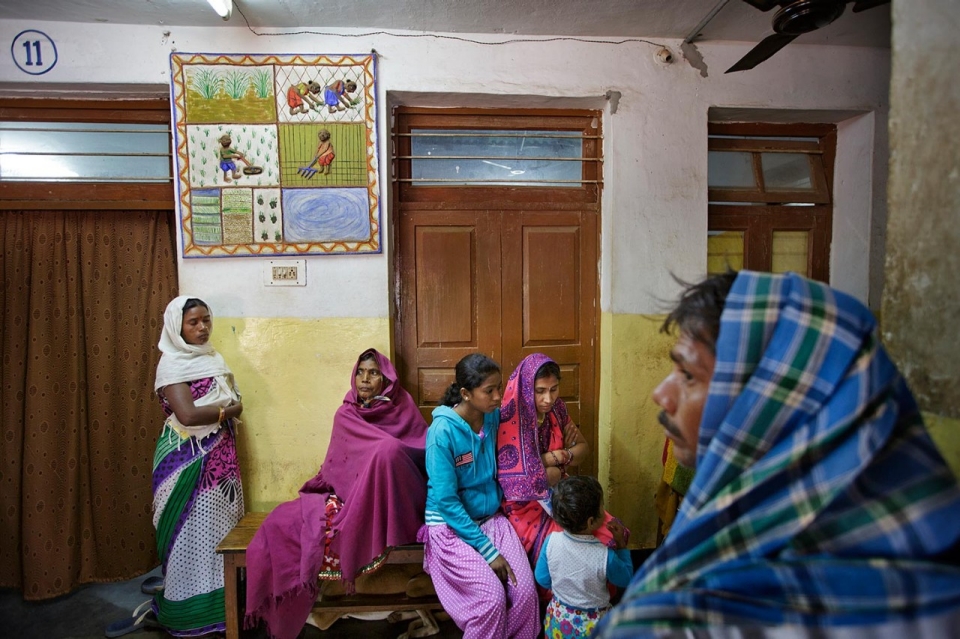Mass-sterilization camps like the one where 13 women died last year reveal the gender bias behind public health care
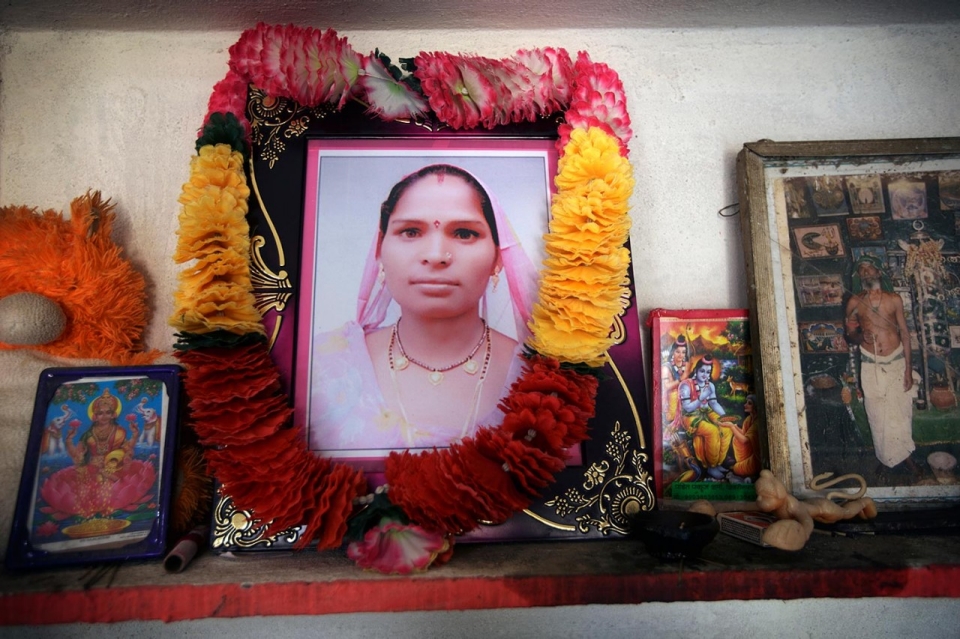
A photograph of Ranjita Suryavanshi among images of deities at her family’s home in Neertu village in the district of Bilaspur, India, Jan. 14, 2015. She was one of 13 women who died in November after going to a mass-sterilization camp
Kuni Takahashi for Al Jazeera America
BILASPUR, India — Ranjita Suryavanshi was on her way to a sterilization camp nine miles from her village in the central Indian state of Chhattisgarh. On that chilly November morning, she hopped into a rickety auto rickshaw, along with her 26-day-old son. She wanted to get a laparoscopic tubectomy that would sever her fallopian tubes and ensure she never got pregnant again.
Suryavanshi promised her husband she would be back home in time to serve him lunch. All her neighbors who had undergone the procedure, she knew, had gone back to their routines within a few hours. But when she returned, it was around 6 p.m. and she had a severe pain in her abdomen.
She was taken to a private hospital in Bilaspur, but her health worsened day by day. “She looked very thin and lifeless lying on the hospital bed,” says Priyanka, her daughter, now 6 years old.
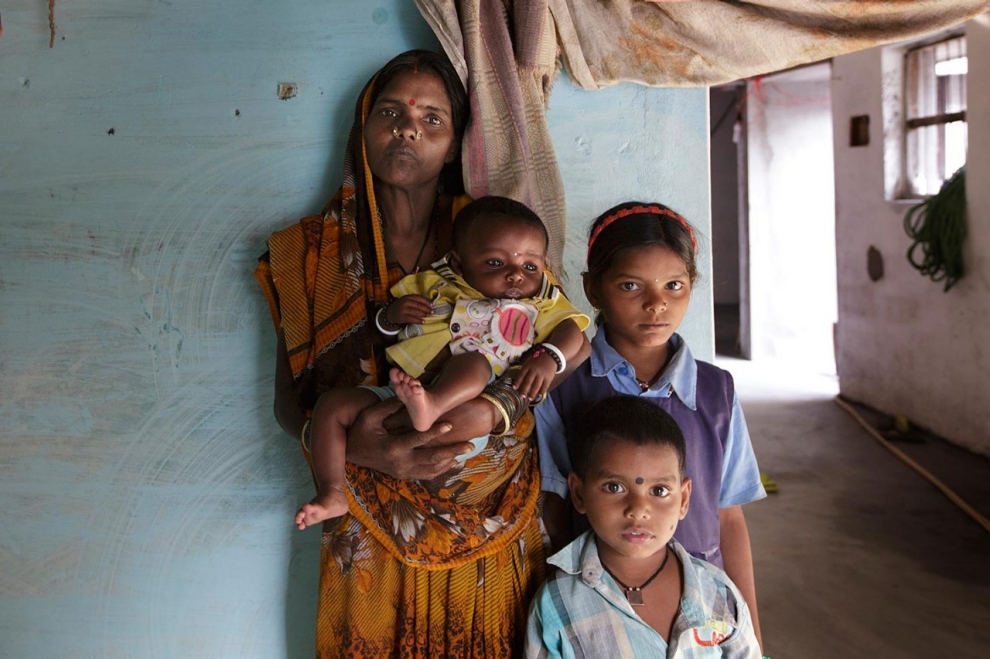
Suryavanshi’s family at their house in Neertu. From left, her mother-in-law Bimla Bai; daughter Priyanka, 9; and sons Ritesh, 3, and Rikesh, 3 months. Kuni Takahashi for Al Jazeera America
Four days later, Suryavanshi died in the hospital, leaving her newborn in the care of her mother-in-law.
“It was a mass-sterilization drive,” says Sulakshana Nandi, of the camp that Suryavanshi had gone to last fall. Nandi does research on rural public health in part for the nonprofit group Jan Swasthya Abhiyan. “The doctor conducted procedures on 83 women in less than five hours. About four minutes per case! He would have barely had time to look up, let alone clean the instruments he was working with, as has been mandated by the Supreme Court.”
Bobby George, who oversaw security at the private hospital where the surgeries were performed that day, agrees. “It was like an industrial production line,” he says.
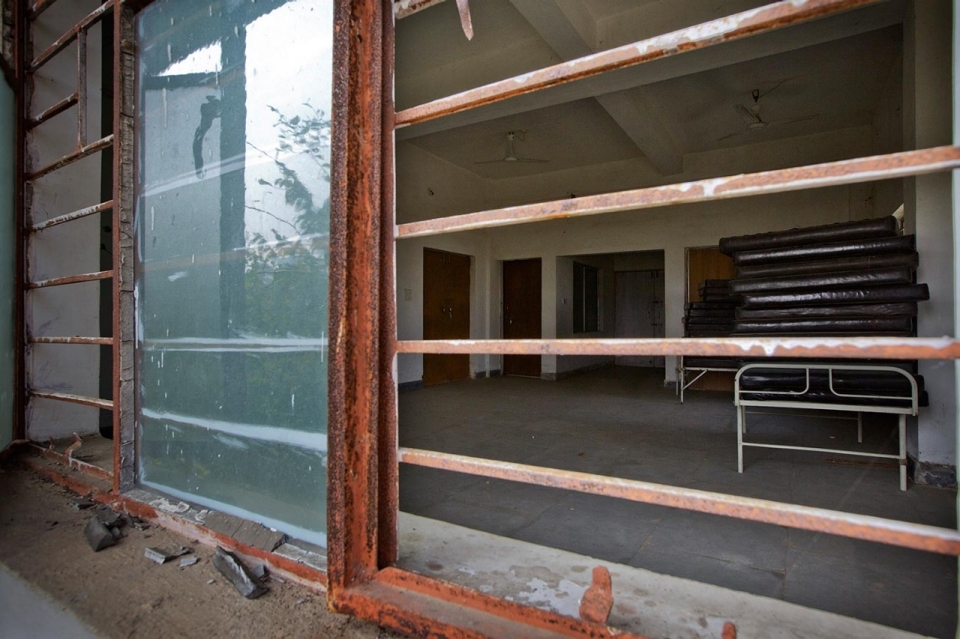
The abandoned hospital in Bilaspur where 13 women died during a mass-sterilization camp. Kuni Takahashi for Al Jazeera America
Sterilization camps like the one Suryavanshi visited are regularly organized all across rural India, where hospitals are few and far between, and equipment scarce. To prevent women from relying on traditional contraceptive methods such as consuming herbs, the government organizes camps that attract women from neighboring villages, where doctors are brought in to perform the procedure free of cost.
The camps are part of a central-government program to control the population, currently 1.3 billion and projected to overtake China’s around 2028.
Here, the most common method of birth control is tubectomy, in which a woman’s fallopian tubes are surgically tied in a hospital procedure that ordinarily requires a day of bed rest. Reversing the procedure requires a separate operation. More than a third of Indian women undergo tubectomies, as compared to the 1 percent of men who undergo vasectomies — an outpatient procedure that is easier, cheaper and simpler to reverse. One reason for the disparity is social norms around masculinity, which equate manhood with sexual potency. The use of condoms — largely promoted to combat AIDS — is, for many Indians, associated with prostitution and the deadly disease; condom use stands at roughly 6 percent and is largely limited to cities.
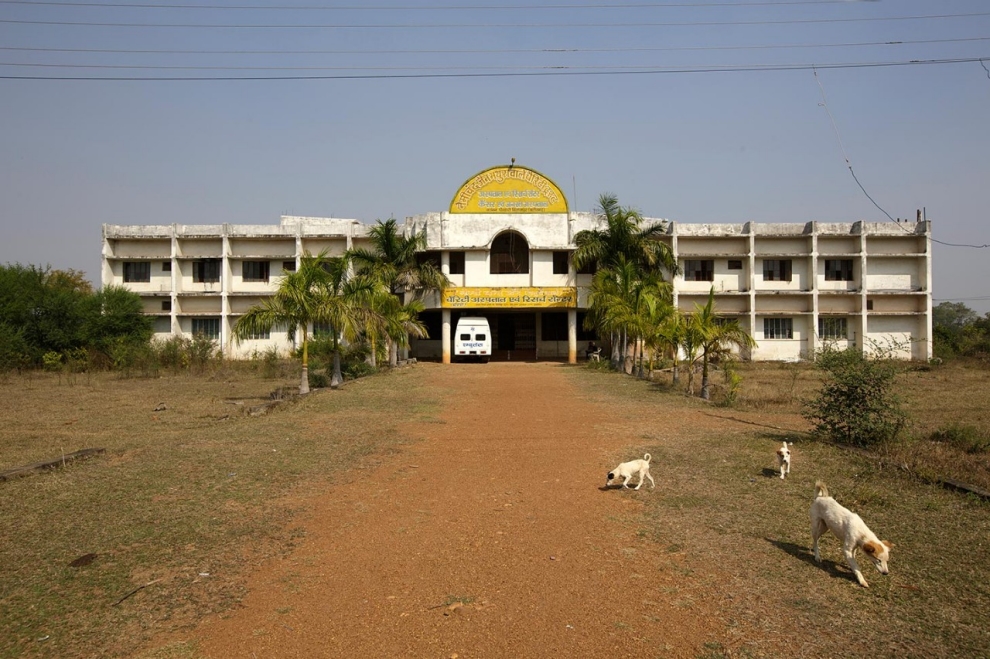
The exterior of the hospital where the botched procedures took place.Kuni Takahashi for Al Jazeera America
Suryavanshi was one of 13 women who died after getting a tubectomy at that camp; more than 50 were hospitalized. The doctor, Rakesh Gupta, who had just a year to go before he retired, was arrested a few days after the deaths and charged with medical negligence.
Ironically, in January 2014, Gupta was the recipient of an award from the state government for “his contribution to rural health” and for having performed 100,000 laparoscopic tubectomies in his 30-odd years as a doctor.
Binayak Sen, a rural-health activist and doctor who focuses on public health, is one of many vocal critics of the government’s role in the women’s deaths. “It is all fine that the doctor was arrested in this incident, but establishing individual culpability is not enough,” he says. “The state — and the larger health system — is responsible for this. Laparoscopies are relatively complex and require stringent cleanliness guidelines. Why doesn’t the state provide people with contraceptive methods which are safe and inexpensive, like condoms?”
Permanent contraception has a contentious history in India. In 1951, in the wake of a freshly earned independence, the central government launched a national family-planning initiative, a euphemism for population control.
In a country where families routinely had more than five children in the 1960s, by 2014 the fertility rates had halved to between two and three children per family.
At first, the poor resisted being sterilized. The high infant mortality rates prior to the 1980s reflected how many children were lost to malnutrition or disease. And though the birth of a child meant an extra mouth to feed, it also meant two extra hands to help boost the family’s income.
But in 1976, when the then-Prime Minister Indira Gandhi declared a state of emergency, during which democratic processes were suspended, her son and advisor, Sanjay Gandhi, launched a compulsory, widely condemned sterilization program to decrease the population.
Under the program, people in some western states were banned from holding positions of power unless they had undergone sterilization; in other areas, water for irrigation was withheld from farm lands until sterilization quotas were met.
Though forcible sterilization was stopped in 1977 once the emergency ended, memories of the program linger. Now, when the government attempts to limit the number of children in families, it must deal with not only society’s notions of masculinity and patriarchal culture, but also the ghosts of the Gandhis’ population-control experiment.
“The health budget is skewed and inadequate,” says Sen, who was imprisoned in 2007 for allegedly having Maoist links in the course of his work on rural health. “It favors the private hospitals in urban areas disproportionately.”
India spends only 1 percent of its gross domestic product on public health, as compared to 3 percent in China and 8.3 percent in the United States. In December 2014, even this meager share was slashed when the new government under Prime Minister Narendra Modi announced a 20 percent cut in the health budget for the fiscal year 2014-15.
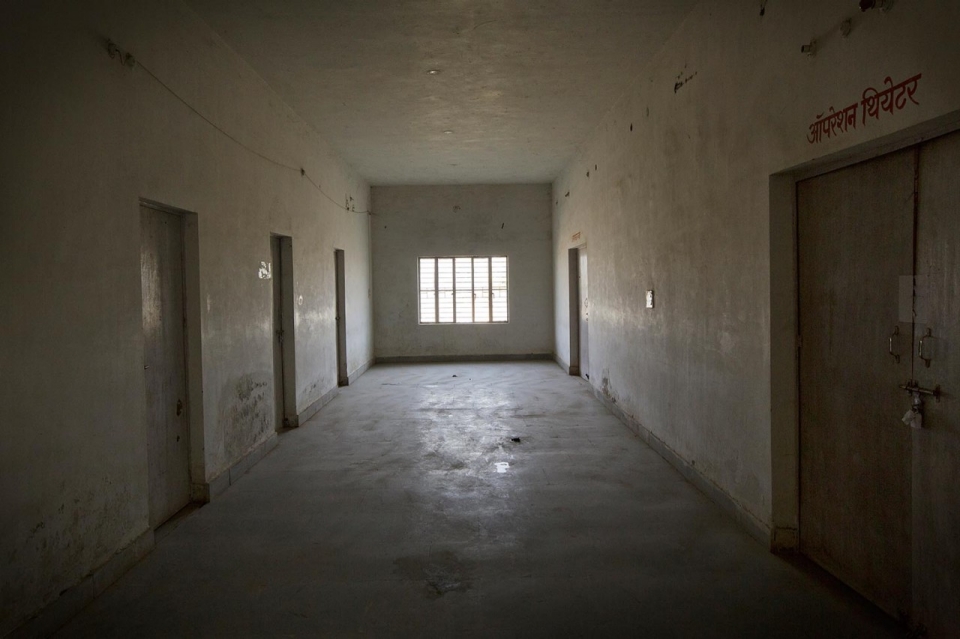
A hallway in the abandoned hospital in Bilaspur where the botched sterilizations took place. Kuni Takahashi for Al Jazeera America
With the health budget reduced, many suspect the abysmal conditions of sterilization camps will worsen. According to the central government’s guidelines, a medical team cannot conduct more than 30 laparoscopic tubectomies in a day, using three laparoscopes. This means that a properly sterilized laparoscope is only capable of performing 10 tubectomies per day. Nonprofits that work in the area say these guidelines are rarely ever adhered to.
Shivkumari Kaiwart, like Suryavanshi, was one of the unlucky ones who died at November’s camp, which took place in the abandoned Nemichand Jain hospital, in Pendari village, six miles from her house.
George, the security guard, says he arranged for a large room on the ground floor of the hospital to be cleaned that morning so it could be turned into the operating theater. Not having been in use for more than a year, the hospital was very dusty and had cobwebs. Gupta, the doctor, arrived late and walked straight into the OT, says Kaiwart’s husband, Bhohari, who had accompanied her. A health worker began to take down the names of the women and sent them in one by one. The women were left on the floor outside the OT to recover from the surgeries, according to accounts by the security guard and relatives of other victims, and given post-operative drugs to help them recover. According to media reports, however, these were likely to have contained a chemical often found in rat poison.
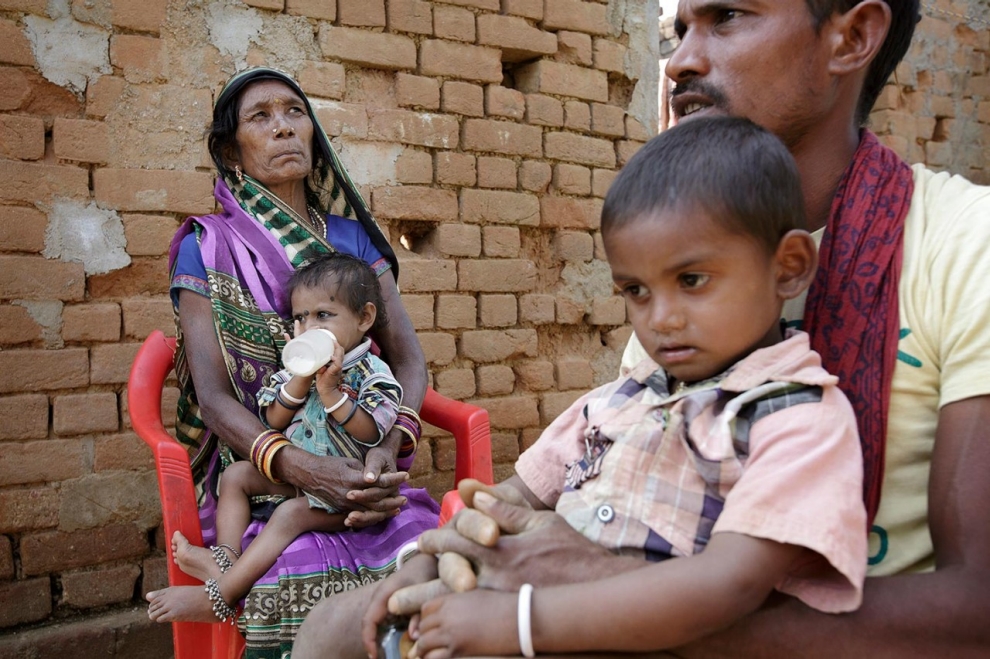
The family of Shivkumari Kaiwart outside their house in Ganiyari village in Bilaspur. From left, her mother-in-law Kala Bai; daughter Anisha, 8 months; son Anish, 3; and husband, Bhohari. Kuni Takahashi for Al Jazeera America
“Deaths in sterilization camps are not unusual, given how unhygienic they are,” says Sen. “This time 13 women died and there is a lot of attention.”
Four years ago, Rukmini Suryavanshi (no relation to Ranjita) was also sterilized in a camp in Bilaspur, where, she says, about 100 women were operated on in a matter of hours. Camps like this are not unusual in states like Chhattisgarh, with largely rural and tribal populations. And many point out that done properly, sterilization can be a safe procedure. “I have seen so many women die while giving birth to a child; in comparison, those that die while getting a sterilization surgery are fewer,” Rukmini Suryavanshi says. The mother of three had a laparoscopic tubectomy in 2011 because of complications during her previous pregnancy; she thought she might not survive another.
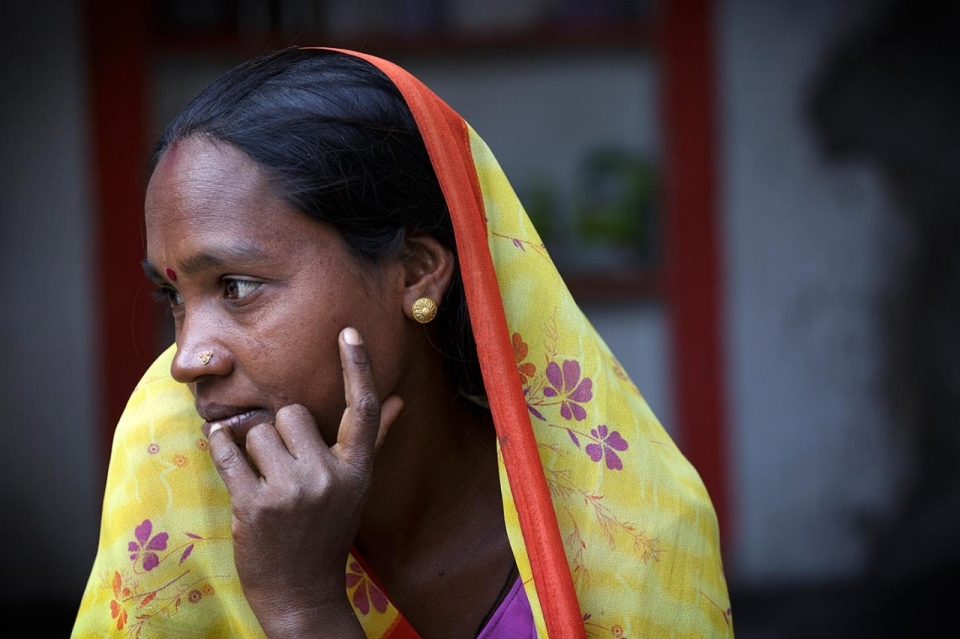
Rukmini Suryavanshi, 32, underwent a tubectomy at a mass-sterilization camp a few years ago.Kuni Takahashi for Al Jazeera America
Government health workers in rural India are responsible for identifying women who are candidates for sterilization. Ideal candidates are between the ages of 18 and 29 who have had three children or more. The health workers are expected to bring a certain number of women to the camps each month. To recruit people, a health worker typically approaches families and talks to them about about the benefits of contraception. “We do not need to tell them that contraception means female sterilization,” says Rajim Yadav, because the assumption is that sterilization is always for women. Yadav is a health worker in Neertu village, where Ranjita Suryavanshi also lived.
For every woman who undergoes a tubectomy, which is provided by the government free of cost, the health worker gets paid about 200 rupees ($3.24) by the government, while the woman receives about 600 rupees. Vasectomies, on the other hand, aren’t free.
“This is not just a question of rural health but also a question of blatant gender discrimination against the women,” says Nandi, the nonprofit worker. “Men do not want to lose their ‘manhood.’ That is the only reason.”
Moreover, vasectomies carry fewer health risks and are inexpensive relative to tubectomies. “Male sterilization is not adequately promoted or easily available to a rural population,” says Sen.
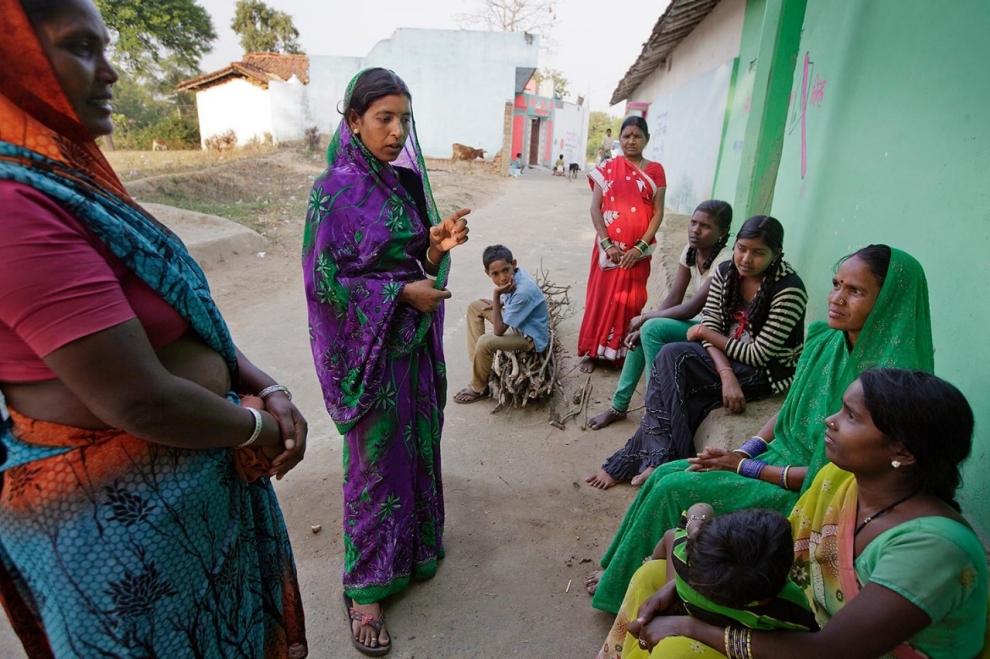
Health worker Rajim Yadav, second from left, talks to women in Neertu village.Kuni Takahashi for Al Jazeera America
But government officials say female sterilization is their only hope of success. “If we target men, the chances of our program succeeding is less,” says T. Sundaraman, a former director of the National Health Systems Resource Centre, a rural-health-research organization. “There needs to be social change before we tailor our sterilization programs towards men.”
“During my time, I didn’t know that even men could be sterilized,” says Meenakshi Oraon of Geniyari village, who is illiterate. “Today, my daughter-in-law knows that. She goes out, speaks to other women, and they tend to exchange notes.” Kavita Oraon, her daughter-in-law, did not study beyond the 10th grade. She has not gotten sterilized; she says she is not sure she wants it done.
Levels of literacy are directly proportional to contraception usage among married couples, according to human-rights lawyer and activist Sudha Bharadwaj. This matters more than whether a woman is economically independent or not, she adds. According to the 2011 national census, 65.5 percent of Indian women are literate, as compared with 82 percent of men.
Seven years ago, Santosh Suryavanshi and Ranjita were married in a small ceremony in their village; they had three children together. “When she entered the house for the first time in her embroidered red sari, she looked very beautiful,” he says now with a heavy voice. He is sitting on a cane cot in their small courtyard, with his mother, Bimla Bai, who now is the primary caregiver to the children. She puts a consolatory arm around her son’s shoulder and says, “She was a very loving women, yes, but you have to move on.”
Bimla Bai says that though her son is deeply shaken by his wife’s death, he will eventually remarry. At 57, she is unable to care for three young children and manage all the household chores alone; a new wife could help shoulder the workload.
“You will control [the] population better if you sterilize men,” says Gayatri Suman, a lawyer with the nonprofit Centre for Social Justice, who is planning to file a lawsuit against the state government on behalf of the families of the women who died in November. “Else,” she says, “it is easy for them to remarry and continue to add” to the population.
Ranjita Suryavanshi was discouraged by both her family and the local health worker from going to the sterilization camp since she had given birth less than a month earlier. “I told her that she should recuperate well first and eat wholesome food. She could always go to the next camp,” says Yadav, the health worker. “But she was scared that she couldn’t refuse sex to her husband and that she might have to carry an unplanned child. In trying to avoid another child, she has left her three children out in the cold.”
The families of the women who died have been given 400,000 rupees by the state government as compensation. And those who were hospitalized got 50,000 rupees. But, Nandi says, the government need not spend money on compensation at all if it would spend intelligently on public-health facilities.
Published in: Al Jazeera America
Published on: -8 February, 2015
Link: http://america.aljazeera.com/multimedia/2015/2/female-sterilization-in-india.html


